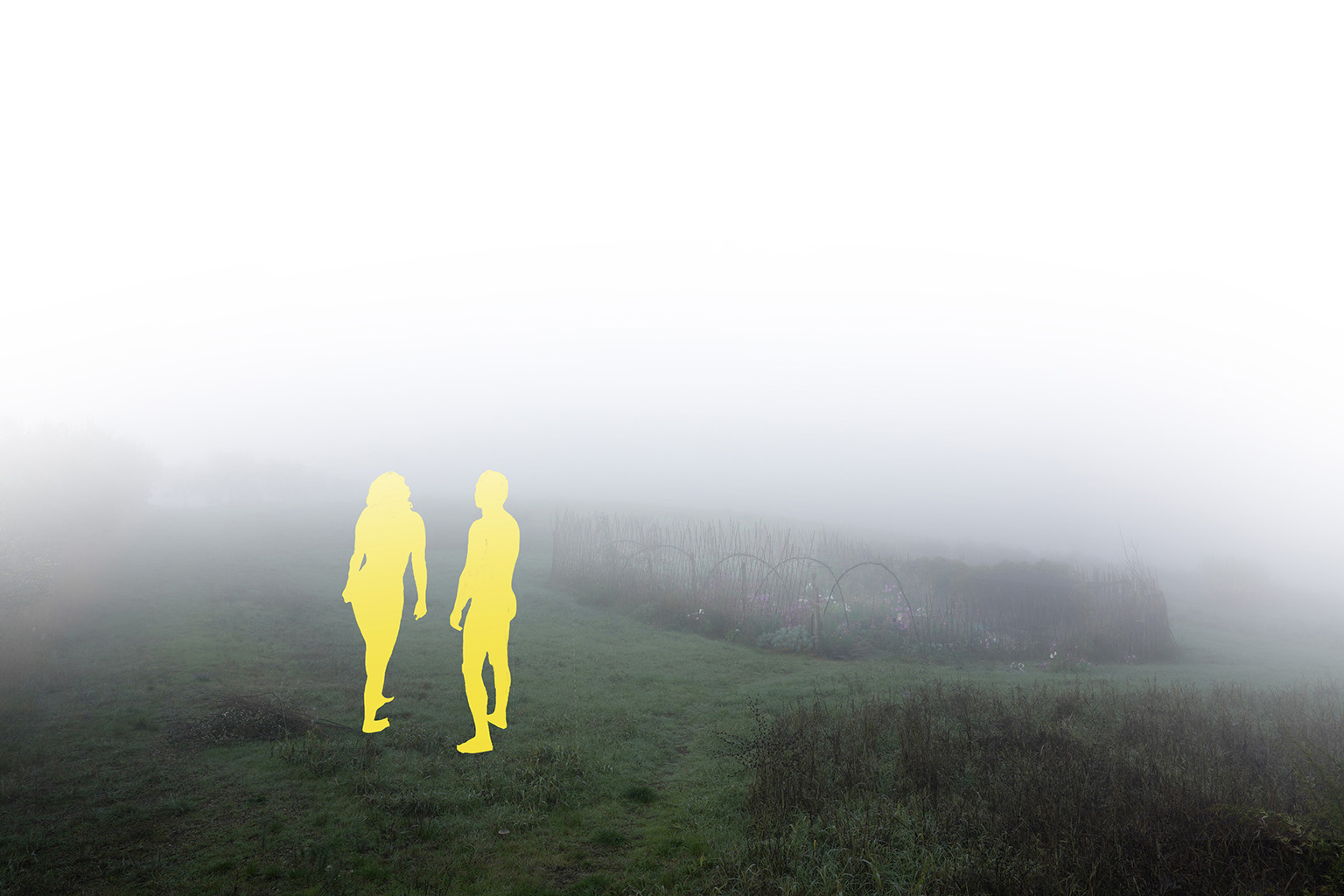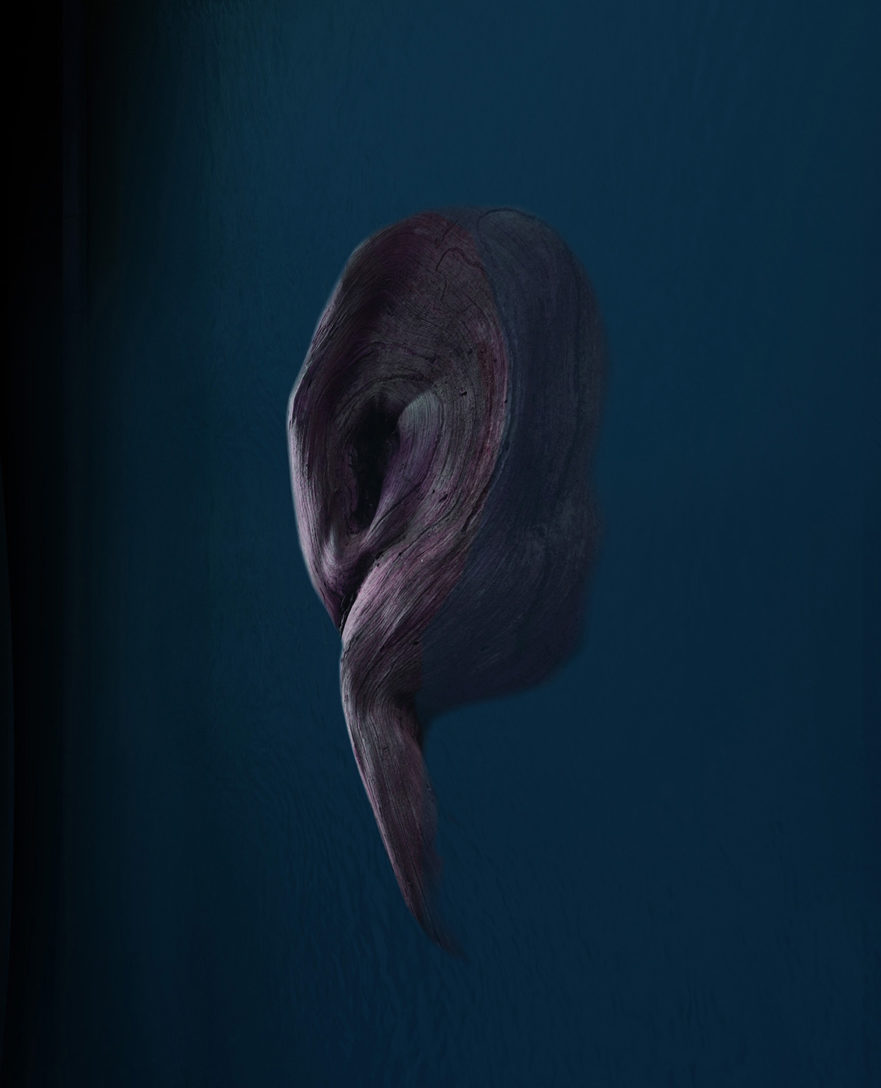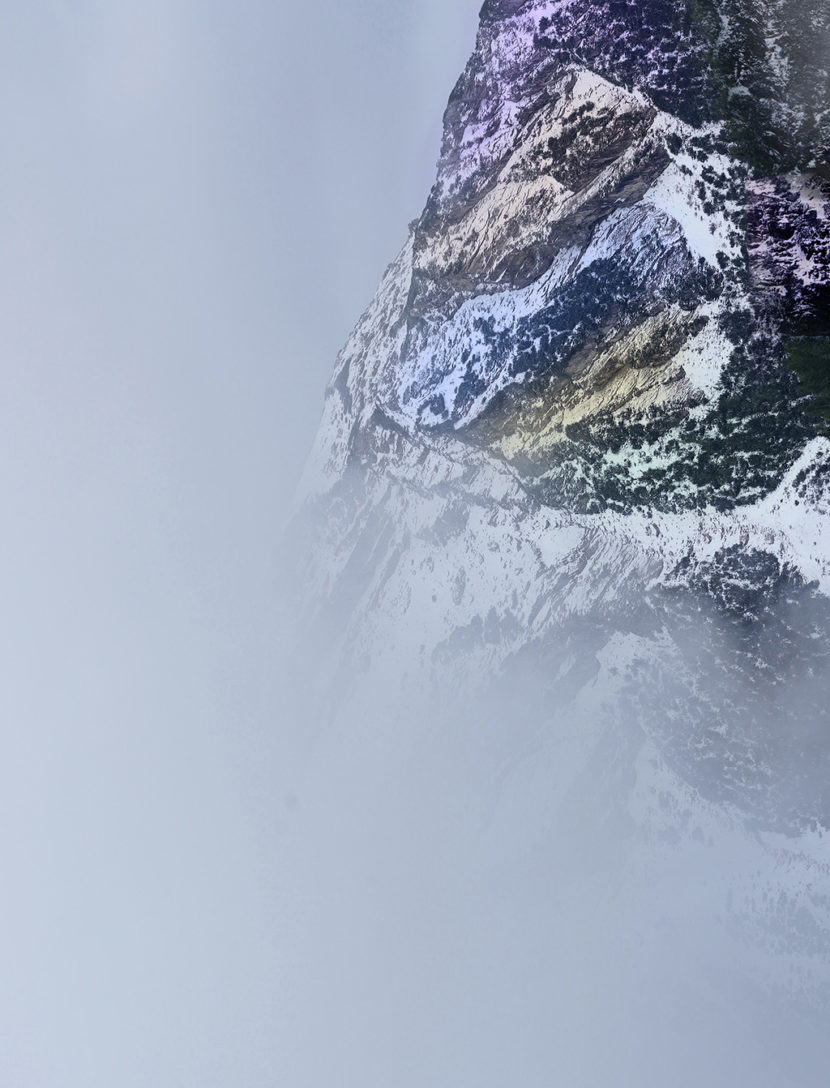Giorgio Barrera, artist
Aby Warburg’s esotericism, a project proposal
For some years now I started again to work on a book project that investigates the Myth, the imaginary and the imaginal. I want to build up a sequence of images (exclusively made for this purpose) that want to manifest the thinking of those humans that has given us a treasure that we have lost 1. The book I imagine is a thought-space to create pathos formulas that lead to the mundus imaginalis 2 and to set us able to ride the thinking of Myth. The work is considered a constellation of images that on a bi-dimensional place plumb, go through and enter the thinking of those who lived in that era.
Giorgio Barrera, Tempo Zero
It is quite difficult to precisely trace how the project will look because the dynamic or the dynamism of the time and space are imprescrutable. The project is therefore intended as an odyssey that follows “Warburg’s intellectual nomadism, that is, his disdain for disciplinary, conceptual, and chronological boundaries” and will have an heuristic approach 3.
A book as an atlas, as a place of simultaneous sensations and visions, a place for thinking. A map of images and signs to follow and to create historical, astronomical and imaginative paths. Being involved in the Myth is also a way to escape from a chimera, our need of safe certainty. My aim is to actualize Myth imaginary through a reinterpretation of Warburg studies and creativity. I would preferably like to carry out the project working in a team in order to create a cozy place where theoretical but also practical-artistic researches can live together.
Giorgio Barrera, Maelstrom
1 “… while every art and science has been developed as many times as possible, and then perish again, these opinions (those of the Myth), together with others have been preserved to this day as relics ..” Aristotle, Metaphysica. (translation is mine).
2″Mundus Imaginalis: or the Imaginary and the Imaginal” an essay by Henry Corbin about the cognitive, analytic, and poetic use of the imagination in a way just not commonly done.
3 Christopher D. Johnson, Memory, Metaphor, and Aby Warburg’s Atlas of Images, A Signale Book Cornell University Press and Cornell University Library Ithaca, New York.
In interpreting the frescoes of the Schifanoia Palace in Ferrara Warburg also took into account the study of astrological images present in a medieval arcane and secret book called Ghayat Al-Hakim (The aim of the wise), nowadays known as Picatrix. A very debatable book considered the summa of Hermetic magic. Marsilio Ficino contributed to spread Hermetism ideas into Renaissance. He named Prisca Theologia or pia filosofia, an archetypal, eternal, true, pure and only religion that can be traced in esoteric disciplines, Neoplatonism, Hermeticism, Jewish Kabbalah, esoteric Astrology and others sciences that have survived time and ages and apparently descend from Mythology. All those disciplines tend to create an unitary knowledge (the magic), imply a spiritual growth and want to harmonize, the earth, human beings and the cosmos by means of images. That’s what the Myth is: the kingdom of a far away time thinking that is still present as it is deposited under the layers of the history of humanity, in our knowledge and imaginary.
Giorgio Barrera, La Montagna Colorata
There is a strong link between Warburg’s philology, the occult sciences, the Hermetic or Mythic theory and praxis. For example the thought-space (Denkraum) and the metaphorical distance are Warburg concepts that we can easily come across in those disciplines. The space-time connections that a man is able to undertake through images are more than fascinating. 4
For those who search and are interested in visual culture it is hard to think not to try to go back to the origin of the Myth and push themselves to explore the esoteric world. If so, it’s necessary then to be prepared to go backwards in those times and places where images were hard-edged: they arrived directly from the skies and from the powerful soul of nature without being filtered, as far as I know, by letters and words. In fact, at that time human beings were immersed and permeated by images and therefore there was no need for a logical interpretation (the way we do now), appearances weren’t physical things to discuss about: there was no separation between the subject and the object.
In my book “La battaglia delle immagini” 5 I declared images shouldn’t be considered as something foreign: we do live together with them even if they are produced by us. I mean that all technical images mix and live together with those produced by nature and men; they surround us and create the reality we deal with, but generally we observe them as if we belong to another world. The same we do with nature and human constructs.
This is “the insufficiency of the [contemporaries] usual conceptions” 6, it depends on the narrowness of mechanistic thinking, that is why we approach reality as if it were alien from our individuality, our separated being.
To focus on how similar Warburg and hermetic or esoteric approaches are, I just want to underline how much the thinking and the invisible are preeminent in both studies. In A, B and C Mnemosyne Atlas panels we run across history and we grasp the polarity between magic and the scientific world. The search for the origin of the manifestations of the things of the world are the labor that often leads humanity to take asylum in religious faith, beliefs and the dogmatic world. Hermetics knows that in order to understand the manifest is necessary to search the invisible, and the thinking is invisible. In those three panels, as in the study of Warburg’s work in general, it is necessary to carry out acts of thinking. But, more than trying to interpret only the iconological meaning of images or the individual artistic expression we need to blend ourselves with the thinking. Warburg constellation of images are meant to sound out time and to dialogue with history by means of intense emotions (Pathosformel).
Giorgio Barrera, Sfumatura di Cremisi; Il Toro Blu
So what is the thinking, what is the invisible? We can assume the thinking is the supernal gift a man has available. It is the link to a deeper concept of existence, a creative act that for some reasons can be considered nowadays the contrary of those futile emotions which are not conveyed into perception and observation. The invisible is inside the visible (in-visible). It means that the visible hides the invisible to our simple senses and it is what allows things to be visible, perceivable to our senses. The in(visible) is the arcane law of our existence.
So, if we proceed to consider images and proto-historical things with our cultural and cult beliefs, we are traveling along the wrong path. Instead, we must embrace the realm of Myth by returning to the understanding of a different and previous thought which, however, pertains and belongs to us as human beings. In fact, believing that the Myth is a narrative invested with sacredness or a mixture of fantastic plots or invented and incomprehensible fairy tales is pernicious.
We should understand that there have been human forms of thought completely different from ours and also needs and necessities totally distant from our interpretative beliefs. To do so means to abandon the rational construction of reality in order to dig and find inside us something that concerns the history of humanity. We should go back to cyclic nature, leave the linear time and the sequence of “cultural layers” we have arranged to look at the future and that, unconsciously, make us turn away to the past.
What to us seems to be mythic or fantastic was vernacular, in Habermas and Husserl words it constituted the lifeworld. In our time, as it is hidden from the realism of reality, we find it difficult to distinguish or understand what our lifeworld is. We need to accept that what seems to be fabled was the language of a different intelligence.
When I was thinking about the title for this project I remembered of L’esoterismo di Dante (Dante’s esotericism), a book written by René Guénon published in 1925 that I read about ten years ago. The book tells us that Dante is constantly providing us starting points for thinking and to envision the traditional sciences, those of numbers, of cosmic cycles and spiritual paths.
4 Albert Einstein: “Ciò che è inconcepibile dell’universo è che sia concepibile”- “What is inconceivable of the universe is that it is conceivable”.
5 Postcart Edizioni, 2016.
6 Giorgio de Santillana, Hertha von Dechend, Il mulino di Amleto, 1969. Gli Adelphi.
On which fields of knowledge are you focused?
I am interested in artistic disciplines and anthroposophy.
What is the object of your research?
Up to ten years ago I concentrated my research on the relationships between subjectivity and the world of representations. I have called this period of mine State of observation. (Andate in pace is a work that belongs to this period which was however carried out in 2013-14). Later, I worked on artistic and writing projects that incorporated and brought a message of total freedom and interdisciplinarity. My research is interested in developing awareness of individual languages and in the creation of “new realisms” that, without self-reference, are bearers of new areas from which to investigate the world.
Could you identify some constants in your work?
My most intimate constant is to feel that there is a need to raise a voice, that is, that artistic production must never be an end in itself but be a mode of interaction. In my latest projects, this need materializes in combating a sort of specious efficacy that we ask of things and our being, our body. Another constant is that of declining (it is a beautiful verb: moving away from the normal direction) concepts and representations towards universal and humanistic symbols, like in my latest work “In the light of you”. Once I would have said translate, now I could say to return literary concepts to be “sense images “. Technical ideograms.
How did you find out about Aby Warburg’s work? What interest you the most?
I cannot say clearly how I learned about Warburg. Let’s say that if you are interested in visual culture, sooner or later you meet him. And I met him later in the sense that I studied his work recently. The thought-space (Denkraum) and (metaphorical)distance are the concepts that attract me most. The space-time connections that man is able to undertake through images fascinate me. In this direction, I am even more attracted by the transversal study of the origins of images, the birth of the Greek myth and cosmogony, astronomy and astrology and natural science. The desire to enter into the time and life of things. “Across time and space”.
How would you define an Atlas?
I would define an atlas as a place of simultaneous sensations and visions. A map of figured tables on which to follow, think, create historical, geographical and imaginative paths. It is not only a field of study but also a way to escape from its presumption of certainty. Like any systematic collection, it tries to achieve its finiteness or completeness.
Atlas as a conceptual, formal and mnemonic device; do you use it in your work?
No, I don’t use it in my work, or maybe I don’t use it consciously.
Do you know about the existence of Mnemotechnics?
Yes.
Which mnemonic system guides the organization of your material?
Much of my work has been digitized. Normally I make folders that concern types of activities. Professional, artistic, didactic. Within these, there are further division criteria concerning the design method, the years of execution of the works, the places to which the material refers. As for what is material, I can’t wait to have a new space to store everything that is pressed in a warehouse.
Are there visual and emotional formulas (pathosformeln) in your project?
Yes, it is very important to me to create emotional and meaningful links that intersect in spacetime.
In your work, do you identify formal or conceptual recurrences such as repetitions and disruption, distance and proximity, identity and migration, conflict and colonization?
Conflict is a word that I consider extremely human. Everything, in every instant exists in polarity. Essentialin my research has always been to find (and isolate) the symptoms that generate discomfort within Western society. Often one of the thoughts that guided me was to reflect on the awareness that the conflict that pervades (our) society is inner, in the individual and, reciprocally, in the community. Repetition and identity are also very important in my work. Repetition I mostly considered it as a mode of photographic expression helpful to objectify the content, identity, in my work, is related to the study of the social context and can be considered the difference that makes the repetition possible.
In your work, what is the balance between image and text?
It is quite difficult to answer this question. The balance and awareness of this relationship has changed a lot over the years. I can say that in my work words have never been in a descriptive relationship with the figurative content of the image. The word is an institution that serves to clarify concepts that arise from the relationship between the things of the world and the individual. In my opinion, words descend on the concept of space whereas images are proto-words and, from my point of view, their origins relate to the comprehension of time.
Thinking about Warburg’s ‘good neighborhood rule’, what are the books that underpin your project?
Antonin Artaud Al paese dei Tarahumara e altri scritti, a cura di Claudio Rugafiori, Adelphi 2009
Giorgio Agamben, Aby Warburg o la scienza senza nome, in AA.VV., Storie di Fantasmi per adulti, AUT – AUT, 199-200
Georges Didi-Huberman, Storia dell’arte e anacronismo delle immagini, Bollati Boringhieri 2007
Antonio R. Damasio Lo strano ordine delle cose. La vita, i sentimenti e la creazione della cultura, Adelphi 2018
Ludwig Wittengstein Note sul “Ramo d’oro” di Frazer, Adelphi 1975
Giorgio de Santillana, Hertha von Dechend Il mulino di Amleto. Saggio sul mito e sulla struttura del tempo, Adelphi 2003
Rudolf Steiner La Filosofia della Libertà. Linee fondamentali di una moderna concezione del mondo, Editrice Antroposofica 2013
Vilém Flusser La cultura dei media, Bruno Mondadori 2004
Giorgio Agamben, Il potere sovrano e la nuda vita. Homo sacer, Einaudi, 2005
Gilles Deleuze, L’immagine movimento cinema 1 e L’immagine tempo cinema 2, Ubulibri 1984,1989
Arnold Van Gennep, I riti di passaggio, Bollati Boringhieri, 1988
Jonathan Crary, Suspensions of perception: attention, spectacle, and modern culture, MIT Press, 1999
Pierre Bourdieu, Ragioni pratiche, Il Mulino, 2009
W.J.T. Mitchell, Pictorial Turn. Saggi di cultura visuale, Duepunti Edizioni, 2009
Giorgio Barrera, (1969) works with photography and video. He focuses his research on the analysis of representation as language, on the relationship between subjectivity and reality, on the role (acting and acted subject) of the individual within society and on forms of media activism that can emancipate living the world of images and the relationships we have with them. His research is carried out through various experimental and design methodologies. He has exhibited internationally, collaborated with various Italian Cultural Institutes, with Mibact and other various institutions and galleries. He has won several awards, curated exhibitions and photographic projects, written texts on photography and visual culture. He is one of the founders (2011) of the Italian artistic collective Fotoromanzo, which mainly deals with subculture and vernacular images, works by assembling iconic materials and makes photo novels.




